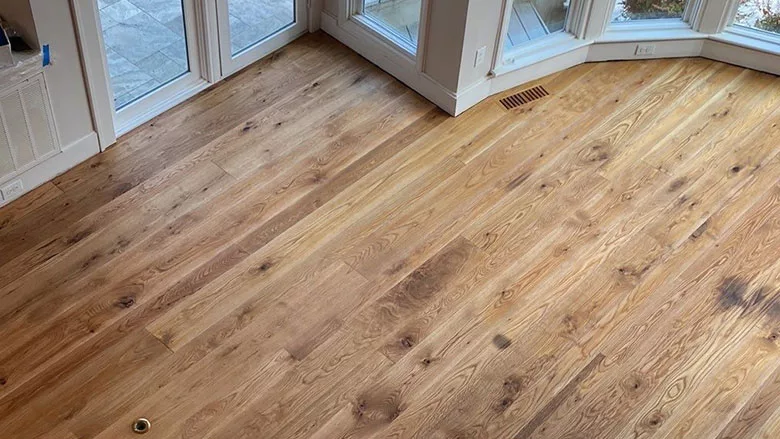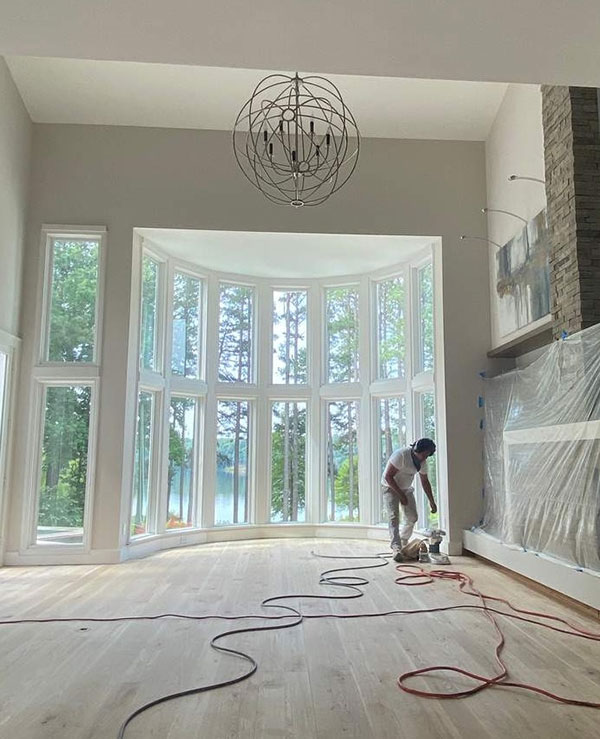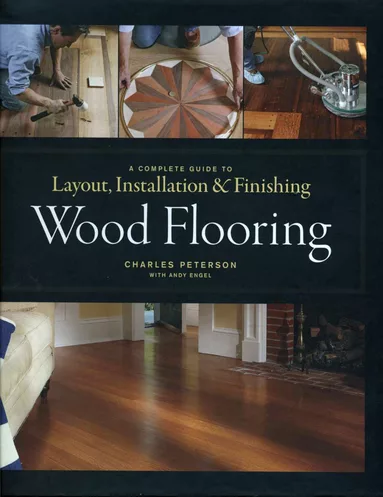Case Study: How a Penetrating Oil Sealer Restored a Damaged White Oak Floor

The owners of Footprints Floors Raleigh share how they restored a white oak floor in a historic home using a penetrating oil sealer.
Photos courtesy of Footprints Floors Raleigh
Shawna Eikenberry and Amanda Wilkins, owners of Footprints Floors Raleigh, were recently called in to a historic home in Raleigh, North Carolina, to restore custom white oak floors that had water damage.
Footprints Floors is a family-owned flooring installation company that offers design, installation, repair, and refinishing services for hardwood, laminate, vinyl, stone, and tile floors. They also provide services for counter tops, bathrooms, fireplace hearths, custom staircases, and built-ins. Footprints Floors has more than 160 territories across 40 states and began franchising in 2013.
Eikenberry and her team, who have combined decades of experience renovating and restoring flooring, were recently recognized for completing the historic home flooring refinishing and restoration project in the Raleigh community using products with zero volatile organic compounds.
Eikenberry and Wilkins were awarded Project of the Year by Footprints Floors’ corporate team for the restoration project, and the team shares how they did it and what made it so special.
FLOOR Trends & Installation: Can you give us an overview of the project?
Shawna Eikenberry: The project was about 1,300 square feet of custom milled white oak flooring that had suffered the effects of time and a little bit of water damage at the rear entry door. Somebody else had unsuccessfully tried to repair it, so we were called in to repair and restore the floors.
These were floors that needed some repair work due to previous water leak at an exterior door. The folks who hired us were relatively new owners, and prior to them purchasing the home, the floors hadn't been kept up with as far as maintenance goes. It's really a restoration project, getting them looking fresh and new again.
FLOOR: What materials were used?

The 1,300 square feet of custom milled white oak flooring was finished with the Woca Diamond Oil Active System.
Eikenberry: We used the Woca Diamond Oil Active System, which is a penetrating oil system, so it is a little bit different than the more traditional polyurethane application. The particular color we were using was natural in refinishing their floors and included refinishing work on a floating staircase.
FLOOR: Did you run into any issues?
Eikenberry: It’s always tough and a little tricky to get the planks to fit well together and this is a character floor which just means the floor has a lot of character marks in it and some spacing between planks. So, we needed to get that right to stay uniform with the overall look of the floors throughout the rest of the field. We are always very clean in our communication with our clients about needing to bring the custom built wood that’s in storage inside with plenty of time to acclimate. Then we will moisture test the wood, the sub floors and surrounding areas to make sure it’s all in equilibrium. We find that when we do that prep work, there aren’t a lot of problems with installation.
FLOOR: How many crew members were needed at the job?
Eikenberry: Amanda and I, as owners, are on the job site every day to make sure things are going according to manufacturer guidelines, industry standards, make sure the customer knows what's happening. The actual people that do the work, at any given time we had at a max four people there.
FLOOR: What made the project special?
Eikenberry: The penetrating oil system that I mentioned is unusual. It's not the typical floor finish system that we use. The custom milled wood that we were working with was a special wide plank. They were about 10-inch wide planks. The beautiful white oak was extremely unique. When floors get a little bit tired or damaged, too many people are willing to just look at getting new floors. So, I think what makes it special is whenever you’re able to save what I think is absolutely beautiful wood floor is a good day.
Amanda Wilkins: The challenge of sanding the floating staircase as well made it unique for us.
Eikenberry: When the floors were initially milled , they were milled with texture on the surface of the wood, so we also had to work through that unique circumstance.
Looking for a reprint of this article?
From high-res PDFs to custom plaques, order your copy today!






